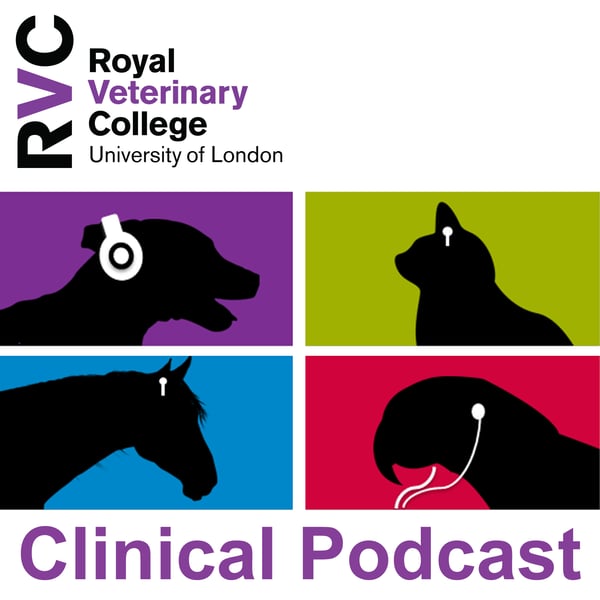115 Pyoderma
Veterinary Clinical Podcasts
Dominic Barfield
5 • 643 Ratings
🗓️ 15 May 2020
⏱️ 59 minutes
🧾️ Download transcript
Summary
We are delighted today to have Ross Bond joining Bri and myself remotely. Ross is Professor of Veterinary Dermatology here at the RVC. Ross joined the RVC in 1990, when the QMHA had only been open for a few years. Ross has a number of interests, particularly in microbial skin disease. We thought that we would speak to him on pyoderma. We hope that you enjoy.
Some papers of interest:
https://pubmed.ncbi.nlm.nih.gov/29162115/
https://pubmed.ncbi.nlm.nih.gov/21831997/
https://pubmed.ncbi.nlm.nih.gov/22731400/
https://pubmed.ncbi.nlm.nih.gov/25376505/
If you have any comments about this podcast, please get in touch: email [email protected]; tweet @dombarfield. We would greatly appreciate your time to rate us on Apple podcast or Acast and kindly write us a review.
Transcript
Click on a timestamp to play from that location
| 0:00.0 | Gooday, Dominic Barfield here, and this is the ABC Clinical Podcast. |
| 0:03.3 | Thank you for listening and thank you for subscribing on a smartphone or generic fruit-based |
| 0:06.7 | device, and we're really grateful for you taking the time to download and listen to this podcast. |
| 0:10.7 | We don't ask for much for a return, but we'd be incredibly grateful if you could pop to Apple Podcast or Acast or Spotify or wherever you're listening to this podcast and leave us a review. |
| 0:20.7 | Obviously, a five-star review would be great. |
| 0:22.8 | You can leave different style reviews for different podcasts. |
| 0:25.5 | So today, joining by myself via the internet, is Professor Ross Bond. |
| 0:31.0 | So Professor Bond, thank you very much for joining us today. |
| 0:34.3 | Pleasure. |
| 0:35.2 | And what we thought we'd talk to you about would be one of your particular interests. |
| 0:40.3 | I know you have quite a quite a few, but to talk about pyoderma, I especially, maybe in dogs |
| 0:47.3 | and cats, but maybe more in dogs. |
| 0:49.3 | So maybe Roskiah asked about, do you think diacomboosing pyoderma is quite a simple thing to do? |
| 0:58.8 | No, not necessarily, but of course there are two aspects in pyotermicases, always. |
| 1:04.8 | One is recognising whether a dog, mainly dogs, we'll talk mainly about dogs, I think, at this point, |
| 1:10.7 | recognising whether a dog has a pyoderm or not, but of course the other aspects of dog, mainly dogs, we'll talk mainly about dogs, I think, at this point, recognizing whether |
| 1:11.6 | a dog has a pyoderm or not, but of course the other aspect classically is, why is it there? |
| 1:18.9 | Because the usual bacterial pathogen, which causes this, Staphylococcus pseud intermedious, |
| 1:25.4 | is a normal inhabitant of healthy canine skin and mucosa. |
| 1:29.3 | And for this organism to transition from a commensal into an opportunistic pathogen, |
| 1:36.3 | then there has to be some disturbance and impairment of the skin immune system in the broadest sense. |
| 1:43.3 | So it is frequently the case that pyrauma is superimposed |
... |
Please login to see the full transcript.
Disclaimer: The podcast and artwork embedded on this page are from Dominic Barfield, and are the property of its owner and not affiliated with or endorsed by Tapesearch.
Generated transcripts are the property of Dominic Barfield and are distributed freely under the Fair Use doctrine. Transcripts generated by Tapesearch are not guaranteed to be accurate.
Copyright © Tapesearch 2025.

